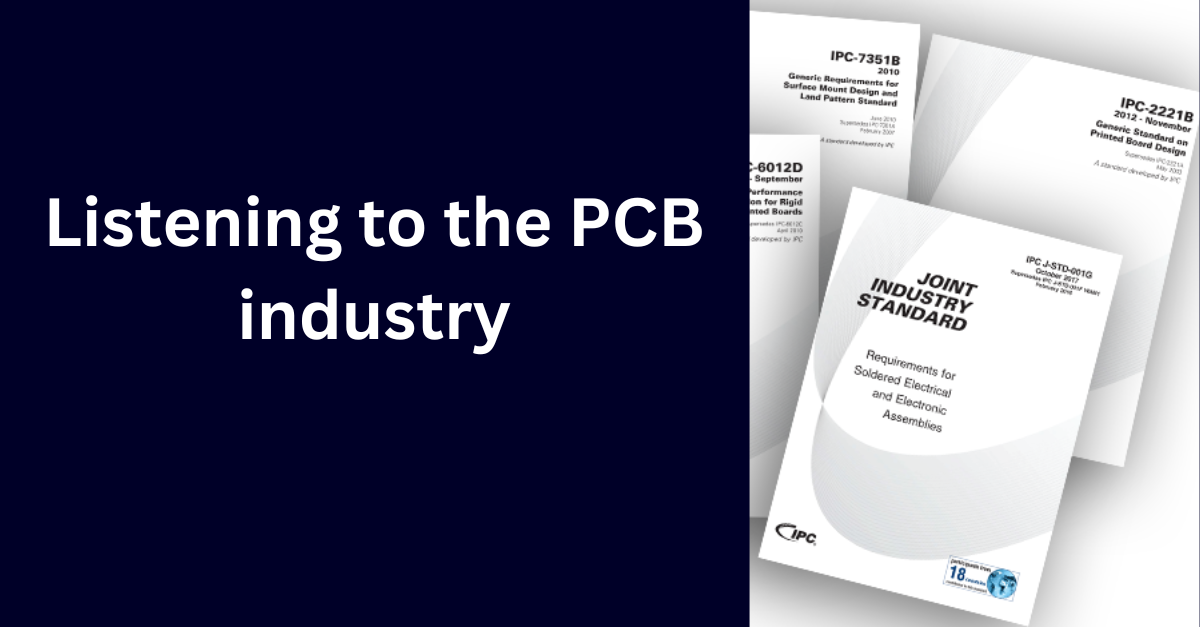Practical Manufacturing Standards – Listening to the PCB industry

I love a good story. Storytelling is the new, cool skill to list on your CV, but listening is possibly a more important skill. Recently I have been listening to many stories emerging from Designers and Manufacturers in the PCB industry. As a product manager of an online DFM tool, I am keen to see how my product meets the issues I’m hearing, and always thinking about how we can do it better. I’d like to share two important topics that have come up recently while listening to your stories.
Communication is key.
Clear, consistent communication between manufacturer and designer is key to project success. Finding a way to clearly explain manufacturing constraints (i.e., what is possible, what is expensive and what will impact quality) is not a trivial task. It is essential to get this information to designers as early as possible so that they can design with the manufacturing environment already in mind.
PCBflow offers a paradigm that allows manufacturers to set up their manufacturing capabilities and constraints in a standardized way that is easily used by designers to test their designs for compliance without fuss. In fact, all the designer has to do in PCBflow is select their manufacturer and let the software point out where the design does not meet the requirements.
In this digital environment, we don’t always have time to pick up the phone or play email tag to set up and adjust endless rules. With PCBflow, the rules are already there waiting to be used in your DFM analysis. You can upload any common design data format including ODB++, IPC2581 or gerber and get started immediately.
Compliance with standards is on everyone’s mind.
Sometimes it is not enough to layout a brilliant design. The industry has converged on some practical manufacturing standards that are meant to ensure that all our brilliant designs are built to last, when needed. Unfortunately, sometimes it is difficult or time-consuming to interpret those standards or bring them down to a practical level to check for compliance.
I’m pleased to announce that some of that work has just become easier. Recently, our colleagues at IPC added several DFM profiles to PCBflow that enable users to quickly assess design compliance with many of the criteria explained in IPC-2221,2222,2152,6012,7351 and J-STD-001. Look for IPC in the PCBflow network. Select the producibility level and class that fit your needs. Connect with the IPC organization in PCBflow to get free access to these profiles and use them to run an analysis on your design.




